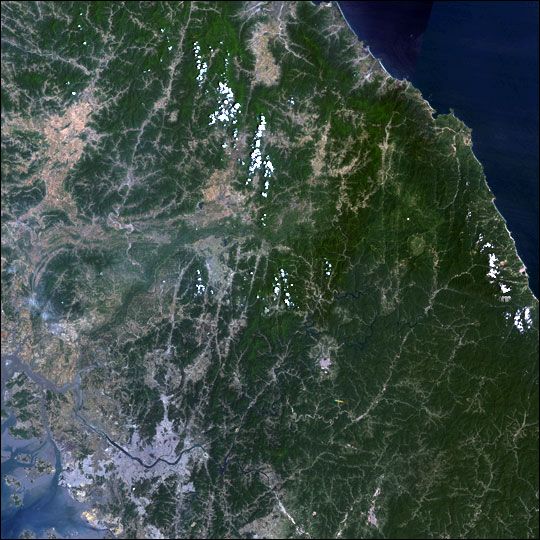
Over the weekend, tensions between North Korea and the rest of the world continued to escalate after the North announced it would not consider dismantling its nuclear weapons program in exchange for economic concessions. This comes after a North Korean nuclear bomb test in February resulted in a unanimous United Nations vote for sanctions against North Korea.
Should open warfare between North and South Korea break out, the approximately 400 square miles (1035 square kilometers) of wilderness in the Demilitarized Zone (DMZ), would likely be one of the first casualties. Ironically, peace might also be problematic for the wildlife of the DMZ.
The 1953 armistice between North and South Korea created the DMZ as a buffer between the two nations. Because military guards tightly control access to the DMZ on both sides of the border, the region has become a de facto wildlife preserve. Diverse animals and plants live in the no-man's land ecosystem, including the rare goat-like Amur goral, Korean mole, Siberian weasel, wild boar, roe deer, water deer, and Eurasian badger, according to a 2004 paper by Seoul National University researchers. Population information is limited because military danger makes studying the region difficult.
PHOTOS: North Korea's History of Saber-Rattling
“War would have devastating consequences,” George Archibald, ornithologist and co-founder of the International Crane Foundation, told Discovery News, “Peace would also be challenging for the wildlife of the region.”
As strange as it sounds, neither war nor peace, but continued tensions between the North and South Korea may well be best for the birds and other wildlife of the DMZ, Archibald said.
The lowlands of the DMZ, particularly the wetlands, are worth their weight in gold, said Archibald. If the Korean Peninsula were to re-unify, the wetlands would be prime real estate for factories making use of the cheap labor from the north and technological advances of the south.
Sign up for the Live Science daily newsletter now
Get the world’s most fascinating discoveries delivered straight to your inbox.
These DMZ wetlands are also valuable for wildlife. Archibald pointed out two birds, the red-crowned crane and black-faced spoonbill, as species that are particularly dependent the DMZ's wetlands.
The wetlands of the DMZ are the winter home of one-third of the world's population of red-crowned cranes.
NEWS: Will De-Extinction Become Reality?
“If hostilities break out between November and March, it would be devastating to the cranes,” said Archibald. “They would try to find other winter habitat, but other wetlands in Korea are patchy and isolated.”
Ninety-percent of the planet's black-faced spoonbill population breeds on islands located in the DMZ. War during the spring and summer would disrupt the birds' mating, according to Archibald.
Other birds depend on the DMZ as well, Archibald said. Approximately 1,500 of the Earth's largest vulture species, the black vulture, over-winter in the DMZ and feed at the slaughterhouses bordering the region. The rare swan goose, along with approximately 100,000 geese of other species, stop in the DMZ during their migrations.
Mammals in the DMZ would also suffer should war engulf the Korean Peninsula.
The destruction of the DMZ would have consequences on the populations of Amur gorals, Siberian musk deer and other Korean animals, according to Ke Chung Kim, of Pennsylvania State University and co-founder of DMZ Forum, an organization advocating for protection of the DMZ as a peace park.
However, the exact effect on large animals of the destruction of the DMZ would be hard to know since there are no specific wildlife programs for those animals, according to Kim.
“Pan-Korean conservation would not be successful without the in-situ biodiversity in the DMZ ecosystem,” Kim told Discovery News. “Many indigenous species are doing well in the renewed DMZ ecosystem.”
The danger to wildlife from commercial development can be seen in the Civilian Control Zone, a ten-mile-wide region south of the DMZ that allows limited residential and economic activities. The western portion of the Zone now has so much construction and human activity that Kim suggests many vertebrates have lost their habitats there.
This story was provided by Discovery News.













